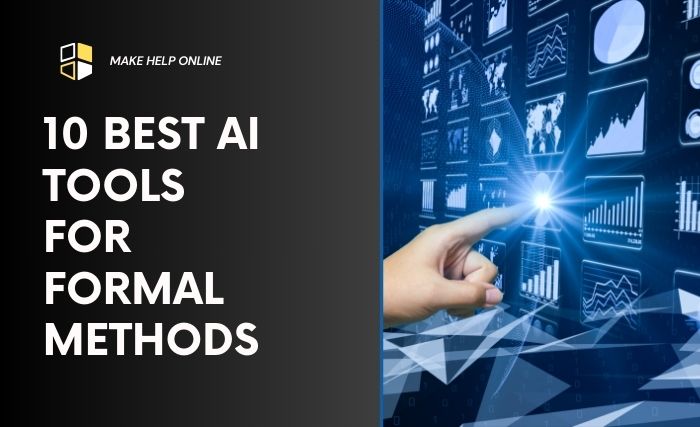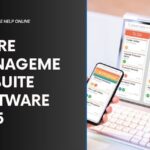In this technology era, AI has changed how we think about and approach software development, verification, and problem-solving. In formal verification, where a mathematical model is used as a basis for checking and proving the correctness of systems, AI is also gaining important ground. This document will assist researchers, developers, and interested parties in getting acquainted with some AI tool for formal methods and their significance.
Table of Contents
What Are Formal Methods, Concepts, and Applications?
Formal methods are computation language and algorithms designed to create software and hardware system models, requirements, Specifications Of the System’s Expectations, and Implementation Validation for AUIC.
The AI tool for formal methods is extremely useful for certification across safety-critical areas like aerospace, military, automotive, and healthcare.
Don’t miss: 10 Best AI Grading Tools FUSD Writing for Teachers
Together with AI Applied Science Function Formal Methods, we, as a community:
- Get rid of manual verification.
- They enable us to work with these systems easily.
- They allow us to unify or correlate requirements and code.
Top 10 AI tool for Formal Methods
These are some AI tool for formal methods that make the use of formal methods easier during the development and verification processes:
1. Tau
Tau is a combined edge case management and formal software that’s crucial in systems engineering. Its main features are:
User Requirements Specification: In case of any ambiguity during the requirements, it transforms the requirements into formal logic.
Non-Coding Contribution: Allows users with no computer programming experience to apply CNL in ‘40.
Automatic Software Update: Software is self-modifiable to satisfy enforced conventions.
Visit the website to learn more about that.
2. VerifAI
This was made by UC Berkeley, This is a formal methods toolkit geared towards systems that contain AI and machine learning components. It’s more suited for:
Formal Methods Design: Focuses on AI systems safety and effective performance during processes.
Formal Models And Simulations: Uses formal models to run tests on sophisticated systems.
Use Cases For Self-Driving: More focused on the automotive and robotics industries.
You can read more about VerifAI here.
3. Prover Labs Applications
Prover Labs offers AI-based solutions that have been specifically tailored for formal methods. A few of the notable features are:
Auto-Formalizer: This tool automatically translates requirements from natural language into formal logic.
Spec Quality Checker: Checks specifications for completeness, correctness, and testability.
Focus on Railway Systems: Common in areas where signaling and other crucial systems and installations are employed.
Don’t miss: 10 Best AI tools for market research In 2025
Here are the offers provided by Prover Labs.
4. FormAI
A project of AI Sweden, FormAI aims to understand how AI can assist formal verification. It is mainly interested in:
Generative AI for Code: Uses code generated by AI together with formal methods for the development of secure software.
Automotive Applications: Aim at safety critical systems in the fields of autonomous driving vehicles and other automated devices and technologies.
More about FormAI can be found here.
5. FormalFoundry.ai
This platform aims to combine AI and formal methods in a way that leads to ensuring the safety, trustworthiness, and liability of AI systems. Key ones include:
Verification and Explainability: Aims to ensure AI systems can be produced to give outputs that can be verified and explained.
Safety Layers: Creates designs coupled with a proof assistant to check AI inputs and outputs.
Discover more at FormalFoundry.ai.
6. Coq
Coq is a formal consideration and a proof management system, which allows these tasks: There are several functionalities of Coq including.
Software Verification: This confirms that all programs are up to specifications.
Mathematical Proofs: Most often used in university circles to prove very advanced theorems.
Extensibility: Allows the use of plugins.
More details about Coq are here.
7. ACL2
ACL2, or A Computer Logic for Applicative Common Lisp is a complete software package that can be used to model computer systems and prove different properties about them. The following are noted on its features:
Automated Reasoning: This is a synthesis of a programming language with a theorem-proving tool.
Versatility: Supports verification of both hardware as well as software.
Industrial Applications: Used in industries such as aviation and those dealing with microprocessor fabrication.
Don’t miss: 5 Best AI SEO Tools Scale Agile Solutions In 2025
More details about ACL2 can be found here.
8. SPIN
SPIN is a well-known tool used to formally verify that distributed systems aren’t faulty. The key things are:
Model Checking: This is proof of certain propositions with the scope of assuring congruence of system models.
Error Detection: The conditions of deadlocks and race conditions are checked. Scalability: The function is well-suiting large systems.
More details about SPIN are available here.
9. TLA+
TLA+ (Temporal Logic of Actions) is a formal system language used to describe concurrent systems. Its features include the following:
- Formal Specification: Useful in both the creation and checking of algorithms.
- Error Detection: Discovers the problem that may crop up in the designs of a system.
- Real-World Usage: Used in firms such as Amazon and Microsoft.
Read more about TLA+ here.
10. KeY
Key is a piece of software designed to use the deductive method to verify Java programs. Key features consist of:
- Eclipse Plug-in: This can be used as an extension in the Eclipse IDE.
- Interactive proving: Users can help in working out the proof as the procedure takes place.
- Java-centric: It aims at establishing the correctness of Java code through formal proofs.
Why Are AI tool for Formal Methods Important?
Merging AI with formal methods could change many areas:
Improved Efficiency: AI replaces developers in monotonous jobs, enabling them to engage in innovative thinking.
Reduced Inaccuracy: Humans are fallible, which is why there are standards and formal methods to ensure nonconformities are addressed.
Don’t miss: 14 Best AI Tools For Graphic Design Free In 2025
Increased Safety: This is key in sectors such as aerospace, automotive, and health care.
Expansion capacity: AI tools manage large and complicated systems, which traditional methods fail to accomplish.
How to Make the Right Choice?
Keep in mind the following when looking for an AI tool for formal methods:
Industry Focus: Is the tool suited for your vertical (automotive, robotics, etc.)?
Usefulness: Is it suitable for a layman?
Compatibility: Is it compatible with the tools and processes already in use?
Collaboration and Assistance: Check for tools with active communities and good support structures.
Conclusion
AI tool for formal methods are opening up possibilities for all-around safe, reliable, and efficient systems in the industry. If you are building autonomous cars, designing a safe software system, or running an important infrastructure, such tools can help you maintain the highest tolerance for error and risk in your systems.
Check out the tools described in this guide and see how they could facilitate your development. With formal methods and AI integrated into your workflow, By integrating AI and formal methods, you can future-proof your projects and build confidently.





